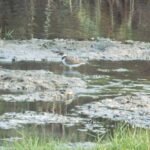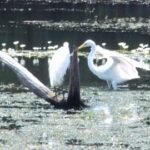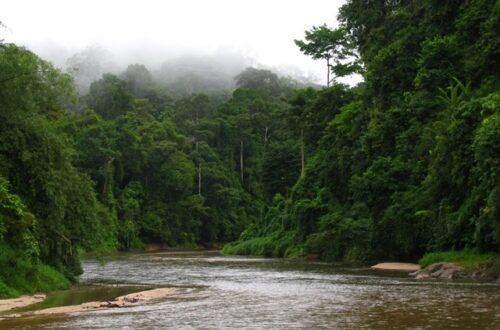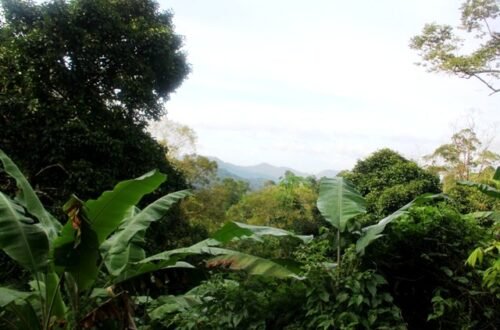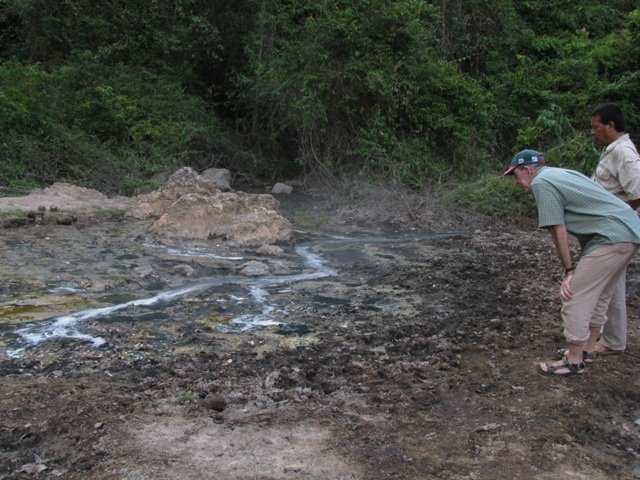
Kuala Gula Birds Sanctuary
The mangrove forest and mudflats of Kuala Gula are particularly important for more than 60 species of water birds including egrets, herons, storks, rails, shore birds terns and gulls, as well as some wetland dependent raptors and kingfishers.The flagship species of Kuala Gula is the globally threatened Milky Stork. Kuala Gula is currently the only known resident area for this vulnerable species in Malaysia. Another Vulnerable stork species, the Lesser Adjutant can be found here easily.
Waterbird Conservation Centre
c/o Jabatan PERHILITAN
34350 Kuala Gula
Perak, Malaysia Tel: +60 5 8902207
GETTING THERE
From Kuala Lumpur, get onto the North South Highway, heading North. Once you reach Perak state, take the Taiping Utara exit and head towards Simpang Empat. From Taiping, you can get to Kuala Gula via Simpang Empat or Selinsing. From the North, take the Parit Buntar exit through Kuala Kurau.
THE PARK AT A GLANCE
Size: 40.000 Hectare
Activities: Birdwatching primarily during the northern winter migratory season (Sept to March); culture (traditional fishing villages); seafood dinners and exploring the mangrove bunds by day or night.
Flora Fauna: Kuala Gula was gazette a permanent forest reserve way back in 1906. 80% of the forest is still used for the production of mangrove woods including Bakau minyak and Bakau kurap, on a sustainable yield basis. The forest is watered through the daily flooding brought in by the tide. Since the Village was founded seventy years ago with 3 Chinese and 2 Malays families, the people of Kuala Gula have lived in harmony with thousands of birds that make their annual migratory trek to the estuary. The birds flying around the fishing village add color to the scenery of Kuala Gula – a haven for birds.
Egrets, particularly the Great Egret and Little Egret are the most abundant species and can be seen very easily in the area. Migratory shorebirds are common here during the northern winter between the months of September and April. About 28 species of shorebirds over winter here or stop over while on passage. The most common ones are the Common Redshank, Terek Sandpiper, Eurasian Curlew, Whimbrel, Curlew Sanpiper, Red-necked Stint and Bar Tailed Godwit. The most common terns and gulls are the Brown headed Gull, White¬ winged Tern and Common Tern. Besides these, the common wetland dependent birds occurring here are the White bellied Sea Eagle, Brahminy Kite, and White throated, Stork billed and Collared Kingfisher.
Besides waterbirds, Kuala Gula is also a sanctuary for many other bird species. These birds utilize mainly the landward side of mangroves, cultivations and open country area. They include raptors, pigeons, parrots, cuckoos, owls, swifts, kingfishers bee eaters, woodpeckers, swallows, bulbuls, drongos, babblers, thrushes, warblers, flycatchers, wagtails, shrikes, mynas, sunbirds, sparrows and munias.
The flagship species of Kuala Gula is the globally threatened Milky Stork. Kuala Gula is currently the only known resident area for this vulnerable species in Malaysia. Another Vulnerable stork species, the Lesser Adjutant can be found here easily.
Other globally threatened species and near threatened species which can be found here are the Endangered Nordmarin’s Greenshank; Vulnerable Chinese Egret, Masked Finfoot and Spoon billed Sandpiper; Near Threatened Black headed Ibis, Asian Dowitcher, Jambu Fruit Dove, Cinnamon headed Green Pigeon, Black bellied Malkoha, Chestnut bellied Malkoha and Mangrove Pitta.
Migration of Kuala Gula birds
Migratory birds arrive here from northern breeding grounds as early as August and while some are on passage, many remain to over winter. Two thirds of the water bird species of Kuala Gula undertake migration every year. They include shorebirds such as sandpipers, plovers, curlews, godwits and other water birds such as egrets, herons, bitterns, terns and gulls.
The shorebirds inhabit wetlands and undertake the longest migrations from breeding grounds in the northern hemisphere to wintering areas in the south. Some of them fly more than 24,000 km annually from as far as Siberia to Australasia.
The extensive mud flats, estuaries and mangroves of Kuala Gula provide food, roosting sites and shelter for water birds and other species. Thus this bird sanctuary is vital for the survival of thousands of these birds. In particular, Kuala Gula is home to 13 species of globally threatened and near threatened bird species. Pulau Kelumpang and Pulau Terong, with their permanently inundated lakes are important feeding and roosting sites for many storks, herons and egrets.
In view of its importance for many species of globally threatened birds, Kuala Gula has been included in the List of Important Bird Areas by Malaysian Nature Society and BirdLife International in 2004.
A birding hot spot for waterbirds
No doubt about it, Kuala Gula is a birdwatching hotspot with habitats that host an exciting list of birds. You will have plenty to see as nearly 200 species have been recorded here including more than 60 species of water birds, 12 species of raptors, 11 species of pigeons and doves, 10 species of parrots and cuckoos, 7 species of kingfishers and 5 species of woodpeckers. At night, you may see a few species of owls around the cultivated areas. From Kuala Gula, you can also visit Malaysia’s largest known breeding colony of the Black crowned Night Heron at Bagan.
[tab]
[/tab]



